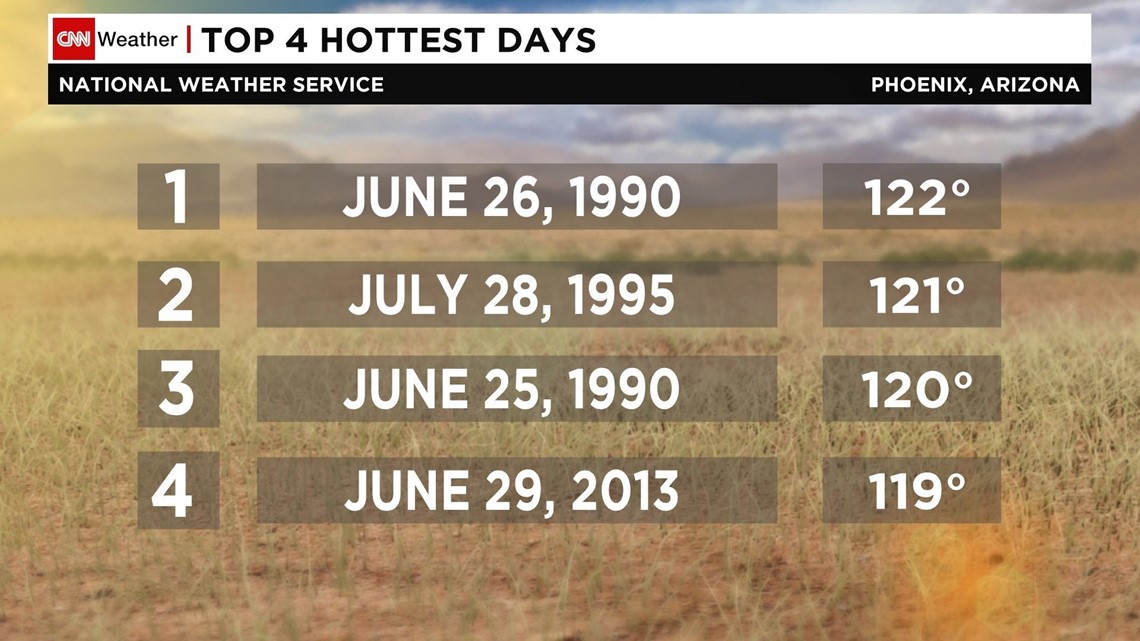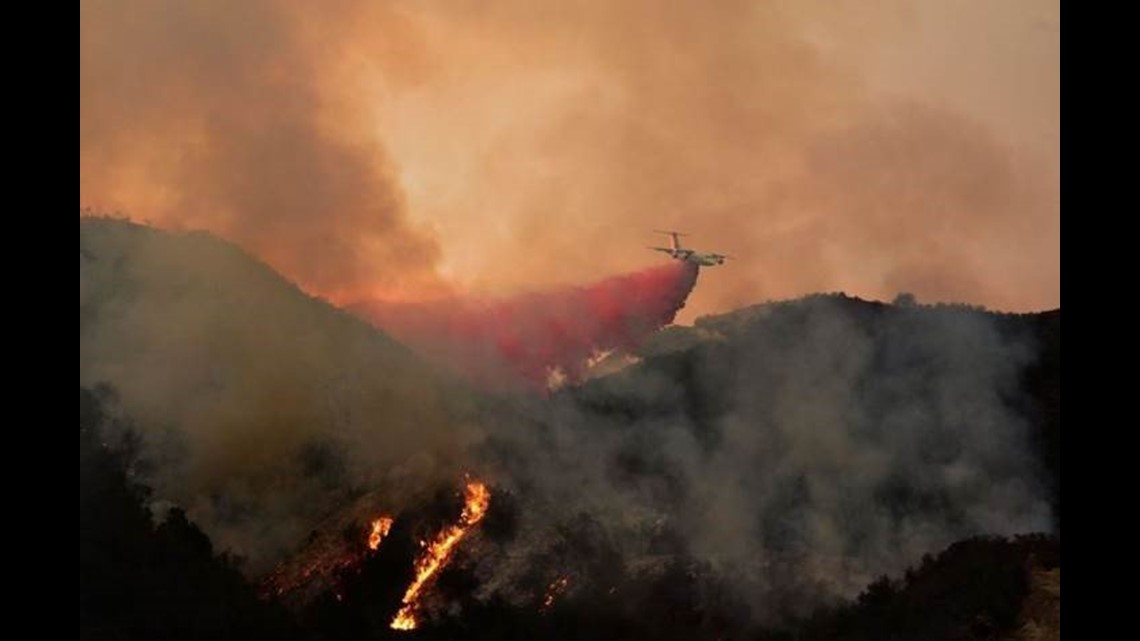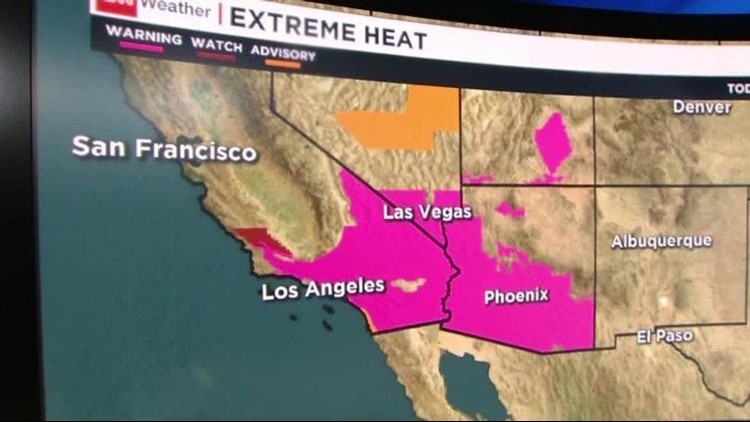(CNN) — A lethal, record-setting heat wave has hit the southwestern United States.
So far four people have been killed in Arizona.


At least three large wildfires are burning in the region, covering an area larger than Paris.
And over 30 million people are under heat warnings or advisories.
It’s the hottest start to summer ever in three states — California, New Mexico and Arizona — according to CNN Meteorologist Pedram Javaheri.
And Monday could see even more record-high temperatures.
Phoenix set a new daily record Sunday, reaching 118 degrees Fahrenheit, according to the National Weather Service.
It was so hot there, a Mesa Airlines flight to the city had to be diverted back to Texas, the airline said.
The highest temperature recorded on Sunday in the United States was just two degrees warmer in nearby Glendale, Arizona, the NWS said.
Seven areas in western and central New Mexico broke heat records in addition to 14 areas in California — where Palm Springs, Thermal, Indio and Borrego all saw temperatures 117 degrees or higher.
Two hikers — a woman from out of state and a man from Europe — died Sunday in Arizona’s Pima County due to the heat according to Sheriff’s spokeswoman Courtney Rodriguez.
In nearby Phoenix, a 28-year-old female died Sunday, Larry Subervi, a Phoenix fire spokesman said. And a day earlier, a 25-year-old man died, he said.


Three large fires are raging in New Mexico, Arizona and California:
Dog Head Wildfire in New Mexico: 17,891 acres burned and 9% contained as of Sunday night Cedar Fire in Arizona: 12,140 acres burned and 40% contained as of Sunday afternoon Sherpa Fire in California: 7,893 acres burned and 51% contained as of Monday morning
Much of the current heat wave can be attributed to a so-called heat dome — a pattern that can lead to record-setting temperatures and heatwaves — according to CNN Meteorologist Rachel Aissen. A heat dome occurs when air is capped by the upper atmosphere in the same location: The air hits the cap and returns to the surface, continuing to heat it like a convection oven.



